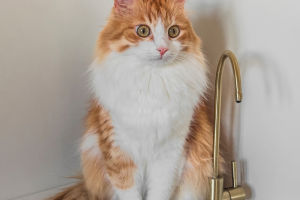Crate training is one of the most important aspects of puppy training.
It's a great option for pet owners who need to leave their puppy alone for short periods and want to ensure their safety.
There are several aspects to pay attention to:
- Safety and Protection: A crate keeps your puppy safe and prevents them from chewing on furniture, shoes, or other household items.
- Speeds Up Training: Crate training helps with housebreaking and makes it easier to establish a routine.
- Temporary Shelter: A crate can serve as a safe space for your puppy when guests visit or during travel.
- Comfort in New Environments: A crate can help your puppy feel secure in unfamiliar places.
- Private Space: All dogs need a private, safe space to retreat to, and a crate provides the perfect solution.
Choosing the Right Crate for Your Puppy
When selecting a crate, you have many options, including metal or plastic crates. To ensure your puppy responds well to the crate, it should be durable, safe, comfortable, and the right size.
- Size Matters: The crate should be large enough for your puppy to stand up, turn around, and lie down comfortably, but not so large that they can use one corner as a bathroom. Measure your puppy from nose to tail and add about four inches for the correct length. Then measure from the floor to the top of their head while sitting and add four inches for the height.
- Secure Lock: Ensure the crate has a sturdy lock to prevent your puppy from escaping.
Creating Positive Associations with the Crate
The key to successful crate training is making the crate a positive and comfortable space for your puppy.
- Introduce Treats and Toys: Start by tossing treats or placing toys inside the crate to encourage your puppy to explore it. Keep the door open and let them enter on their own.
- Feed Meals in the Crate: Place your puppy's food bowl inside the crate to create a positive association.
- Comfortable Bedding: Add a soft bed or blanket to make the crate cozy. Use washable materials in case of accidents.
- Limit Water in the Crate: Avoid leaving water in the crate for extended periods. Offer water after your puppy leaves the crate.
- Safe Toys: Provide safe toys to keep your puppy entertained while in the crate.
Getting Your Puppy Used to the Crate
Once your puppy is comfortable entering the crate, start closing the door for short periods.
- Short Intervals: Begin by closing the door for a few seconds, then open it and reward your puppy with treats and praise. Gradually increase the time to 15 minutes.
- Stay Nearby: Initially, stay in the room while your puppy is in the crate to help them feel secure.
- Practice Leaving: Gradually increase the time you leave the room. Start with five minutes, then ten, and work up to longer periods.
Puppy Crate Training Schedule
Crate training requires a consistent daily schedule to be effective.
- Nighttime Routine: Place the crate near your bed so you can hear your puppy if they need to go out during the night. Puppies can only hold their bladder for about one hour per month of age, so set alarms for nighttime breaks.
- Morning Routine: Take your puppy outside first thing in the morning to relieve themselves.
- After Meals and Water: Take your puppy outside 5 to 30 minutes after eating or drinking to encourage bathroom breaks.
Crate training is an essential part of raising a well-adjusted puppy. By choosing the right crate, creating positive associations, and following a consistent schedule, you can make crate training a positive experience for both you and your puppy. Remember, patience and consistency are key to success!


